
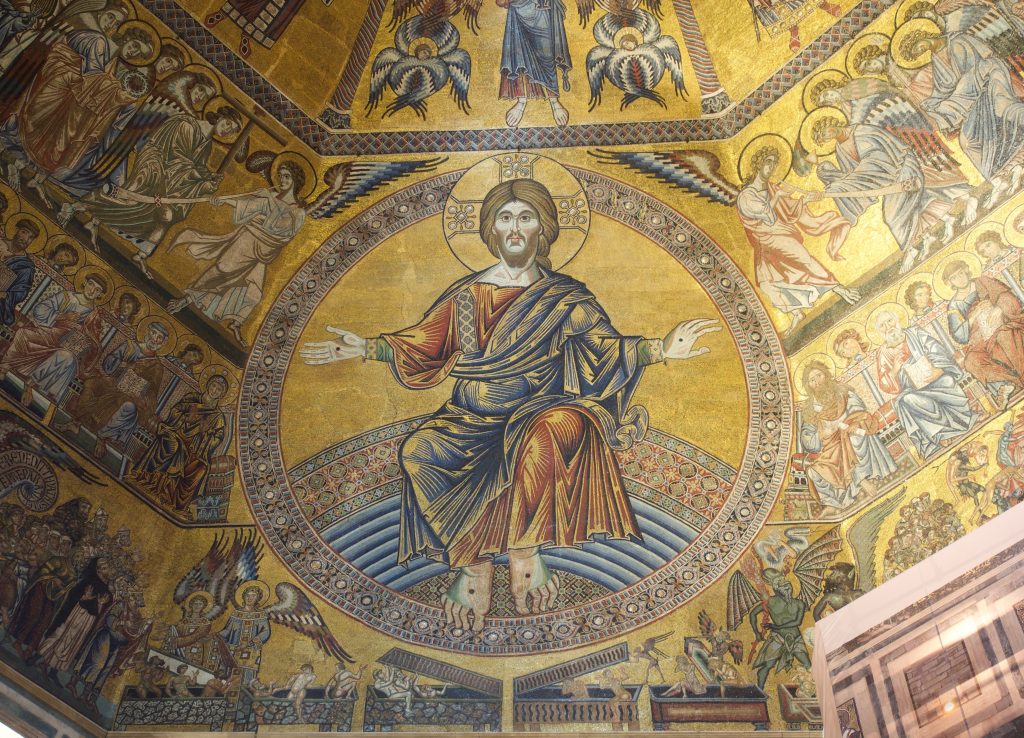
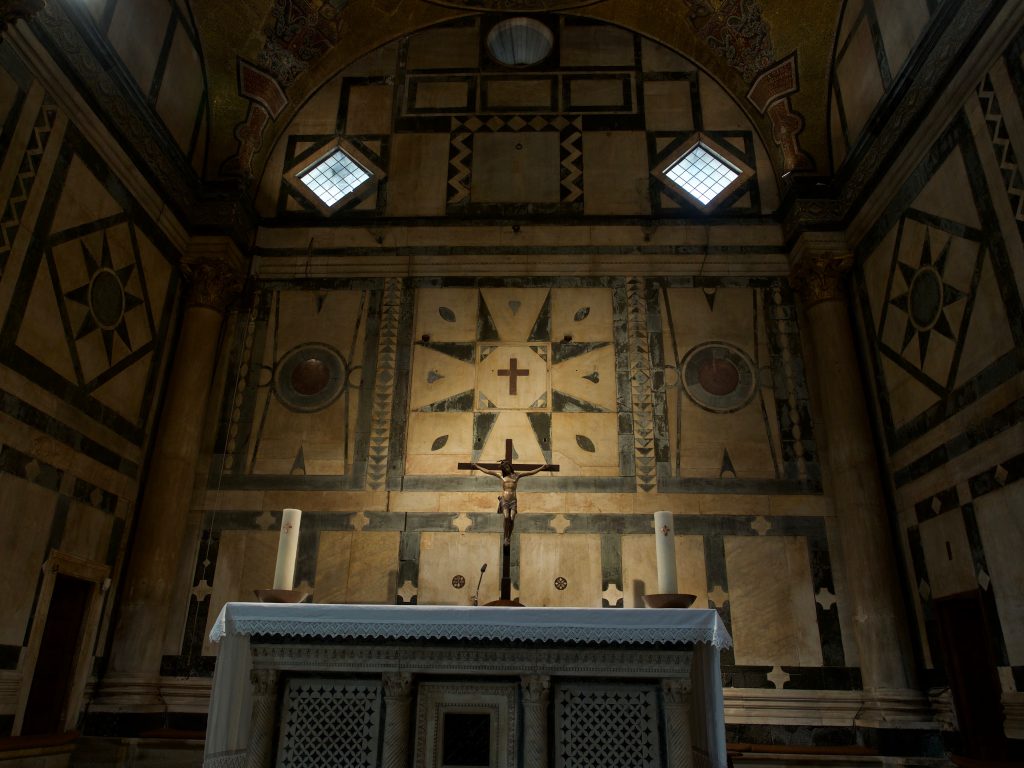

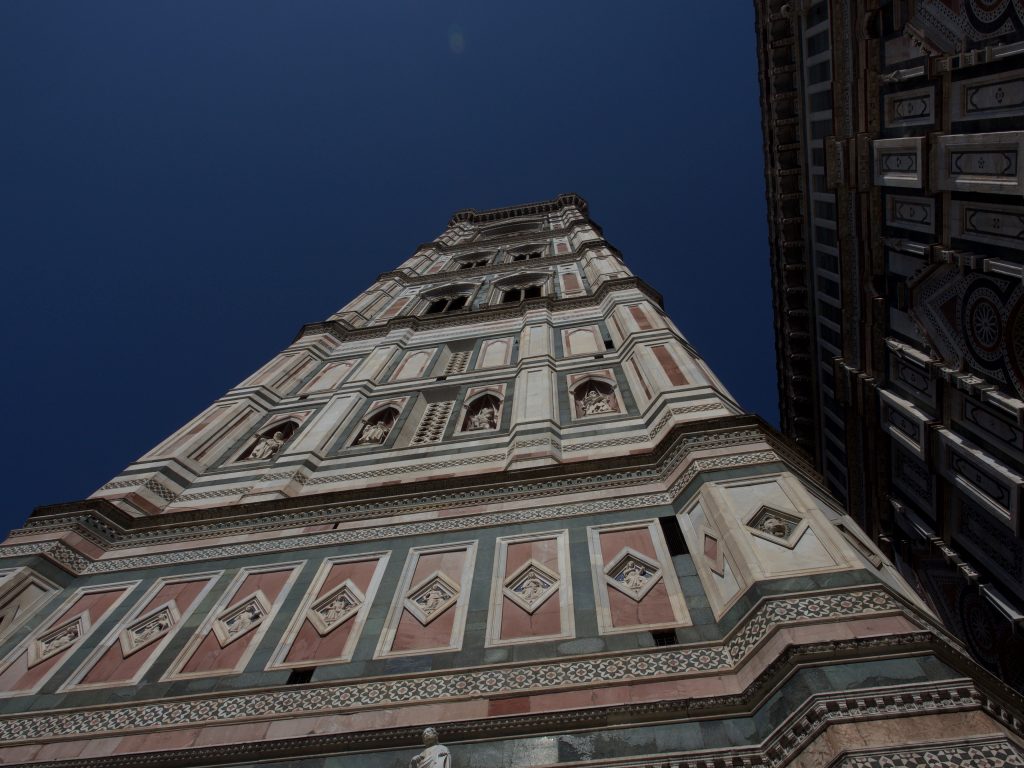
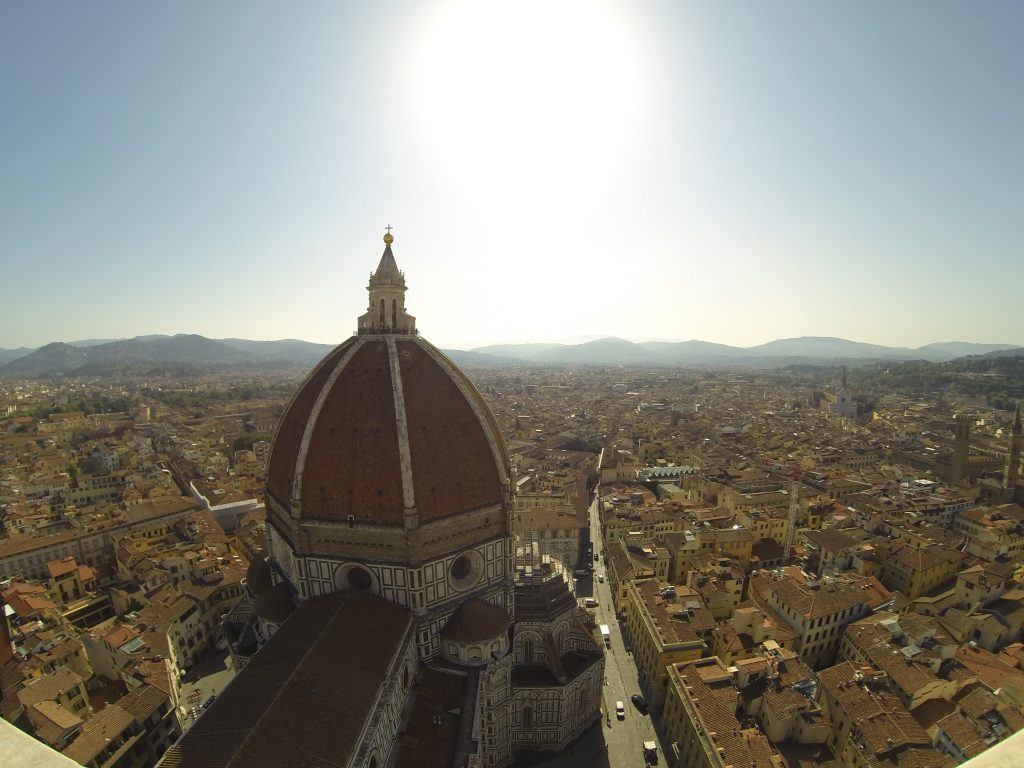
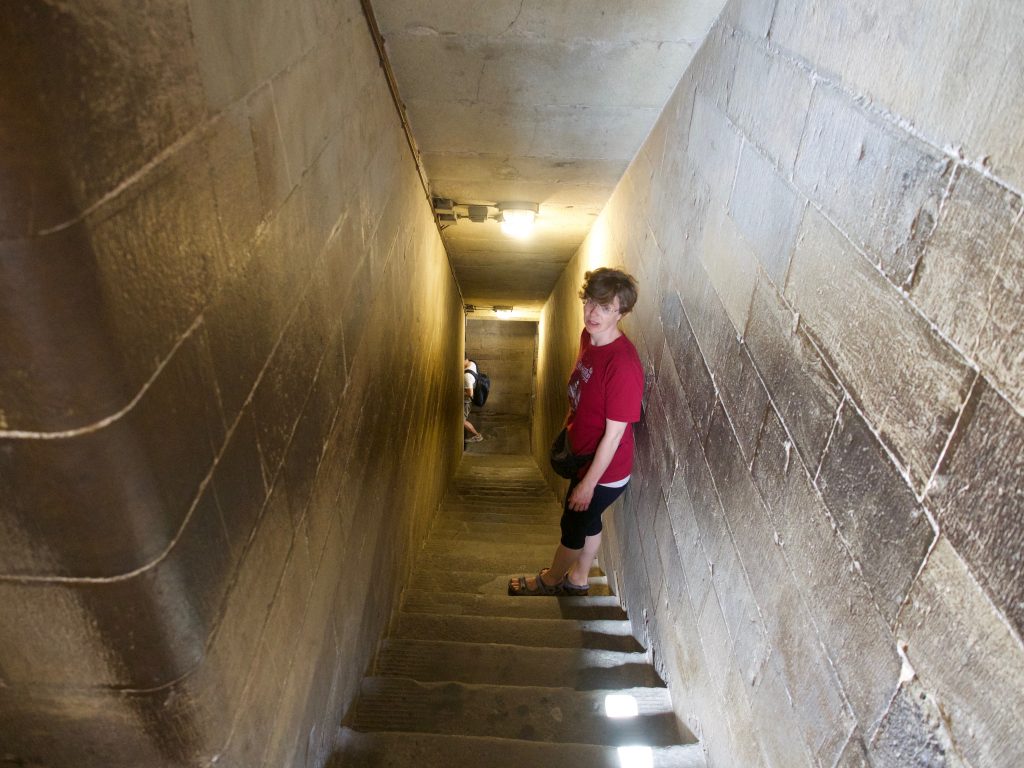
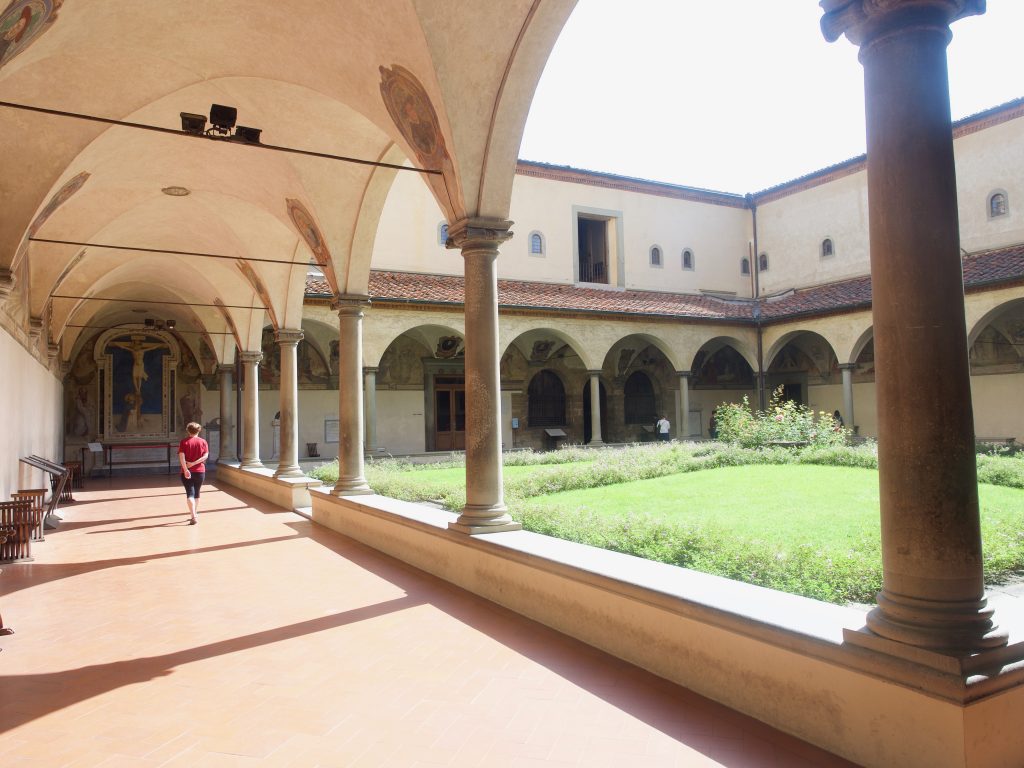
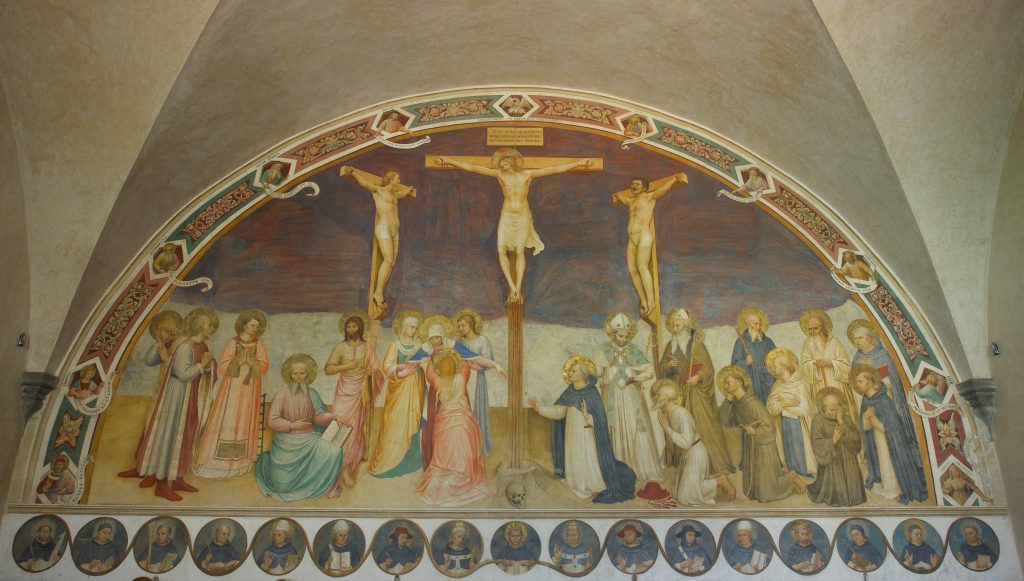
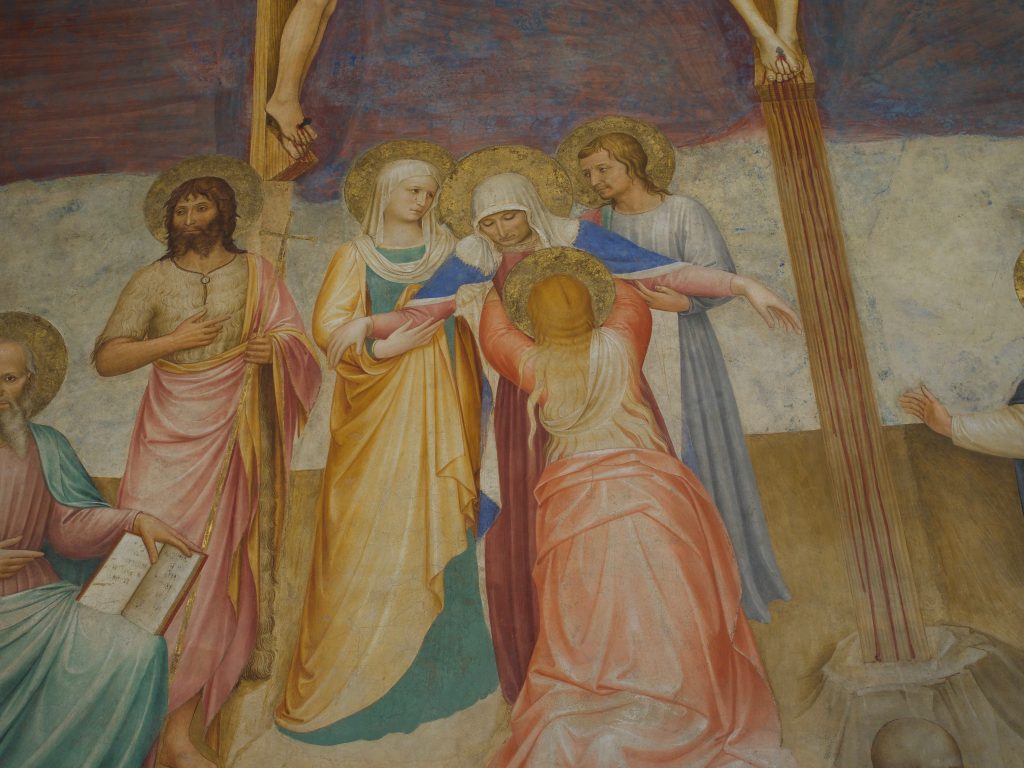
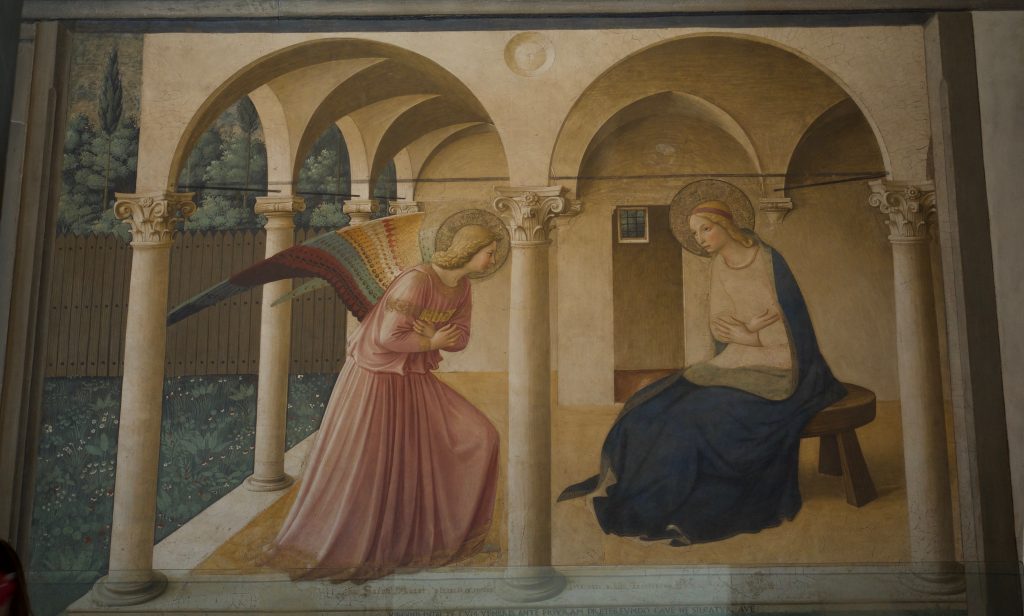
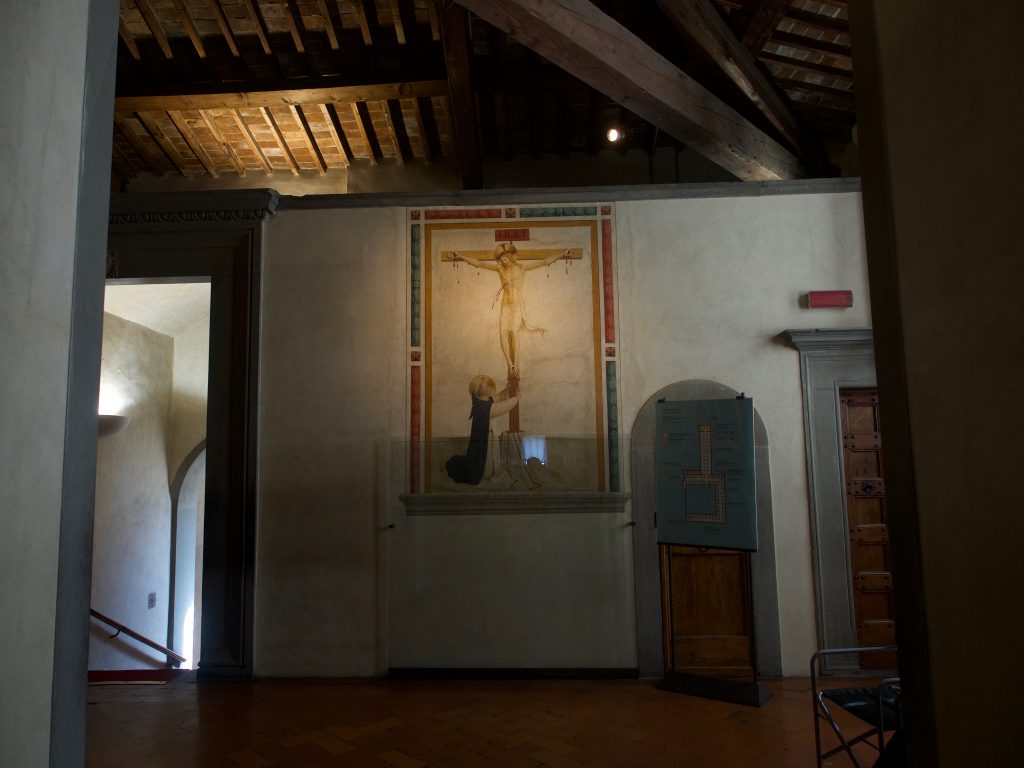

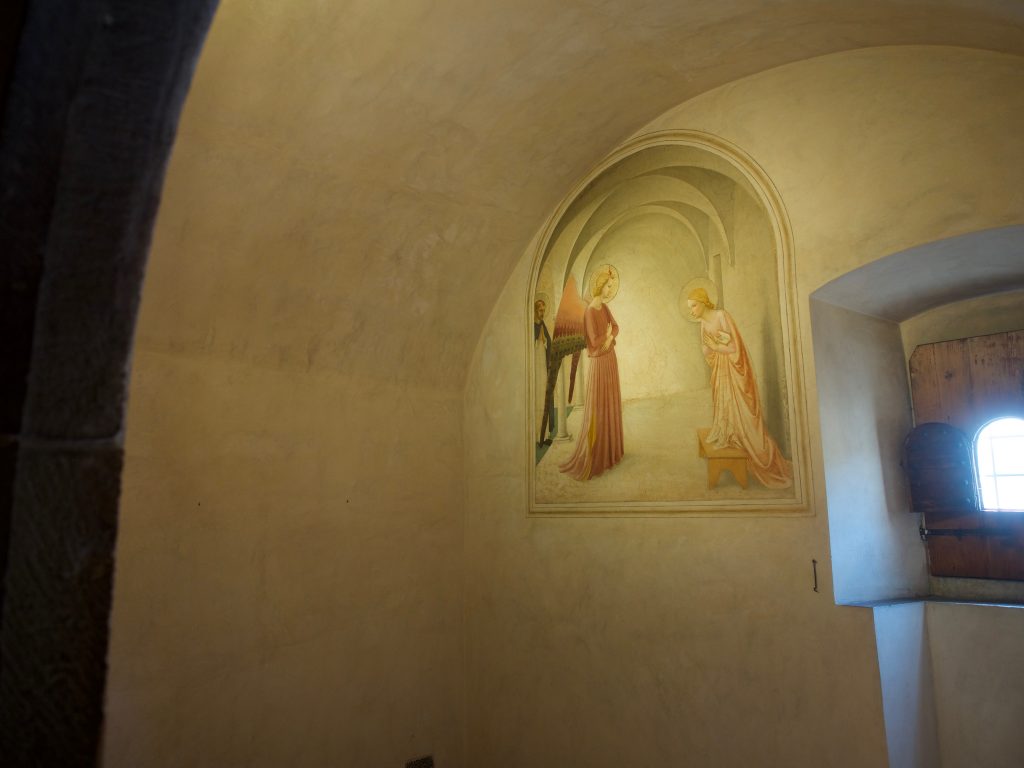

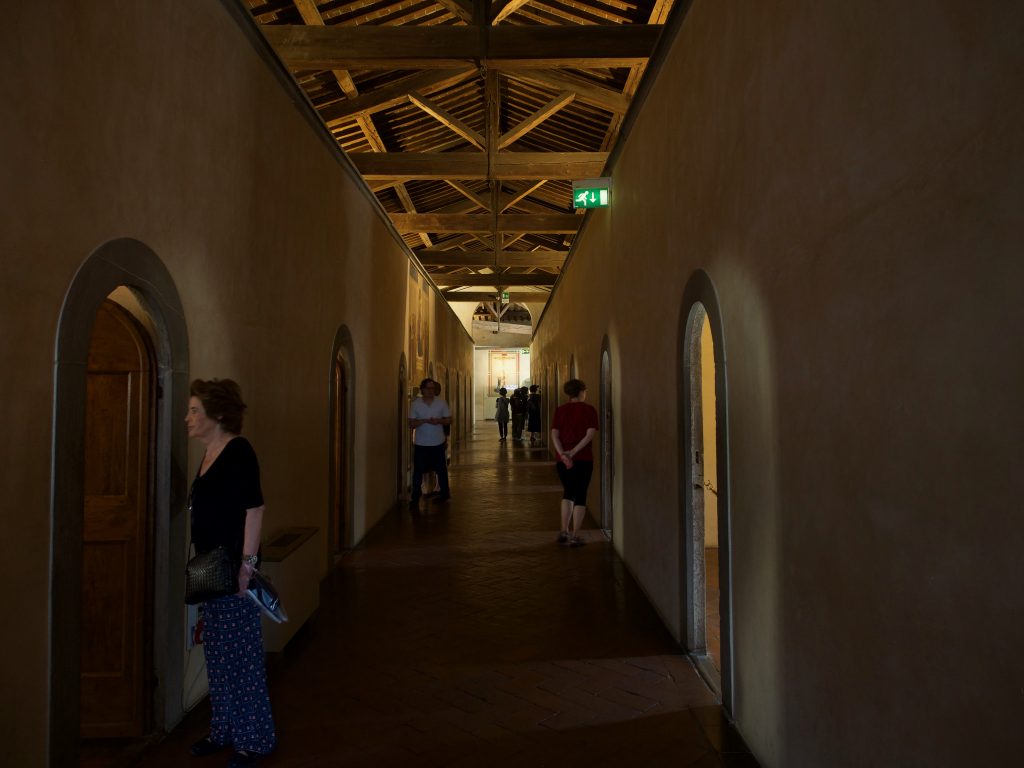
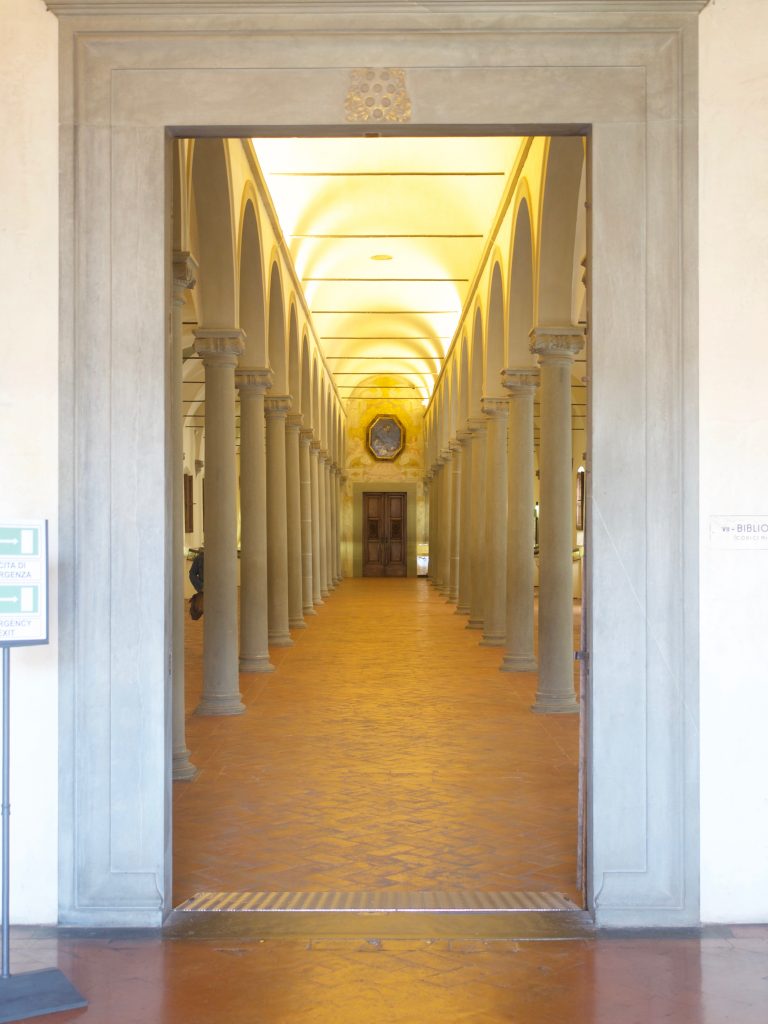
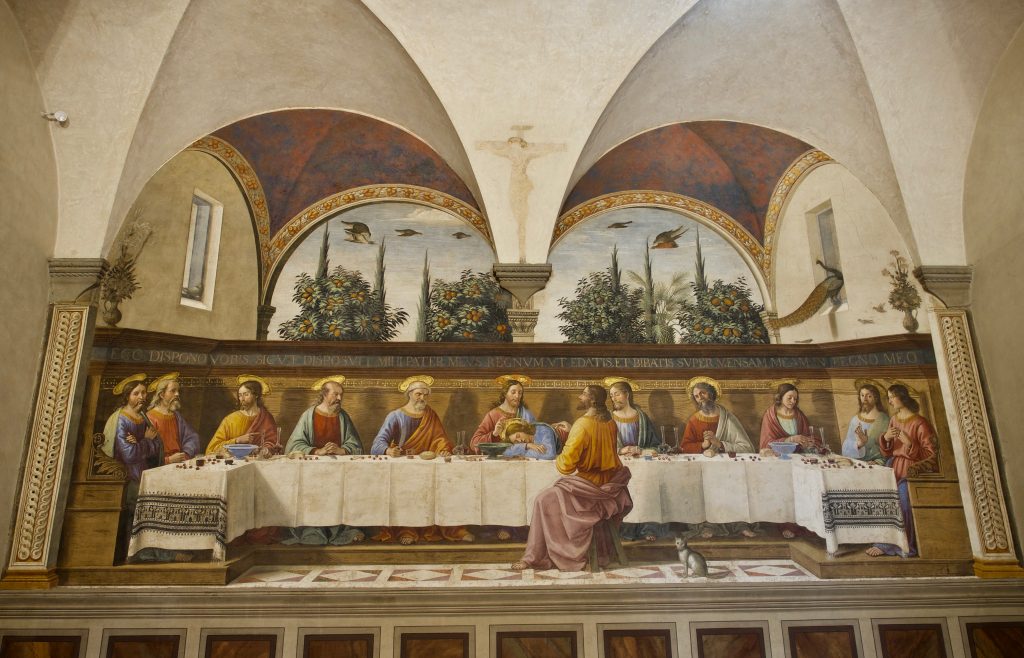
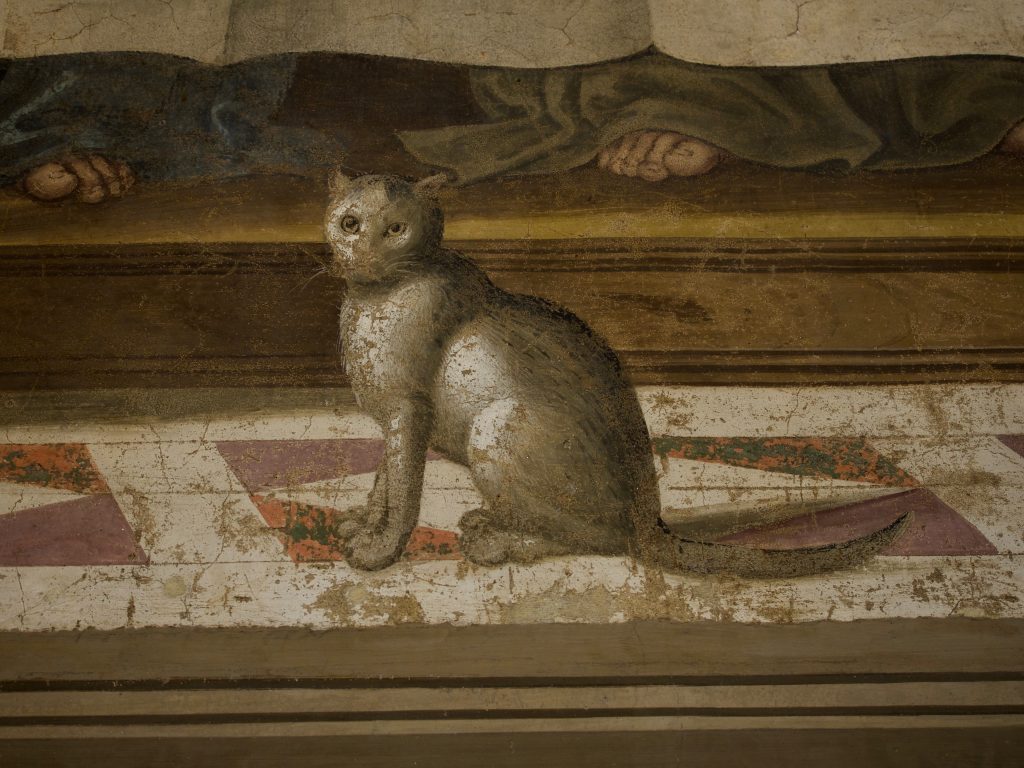

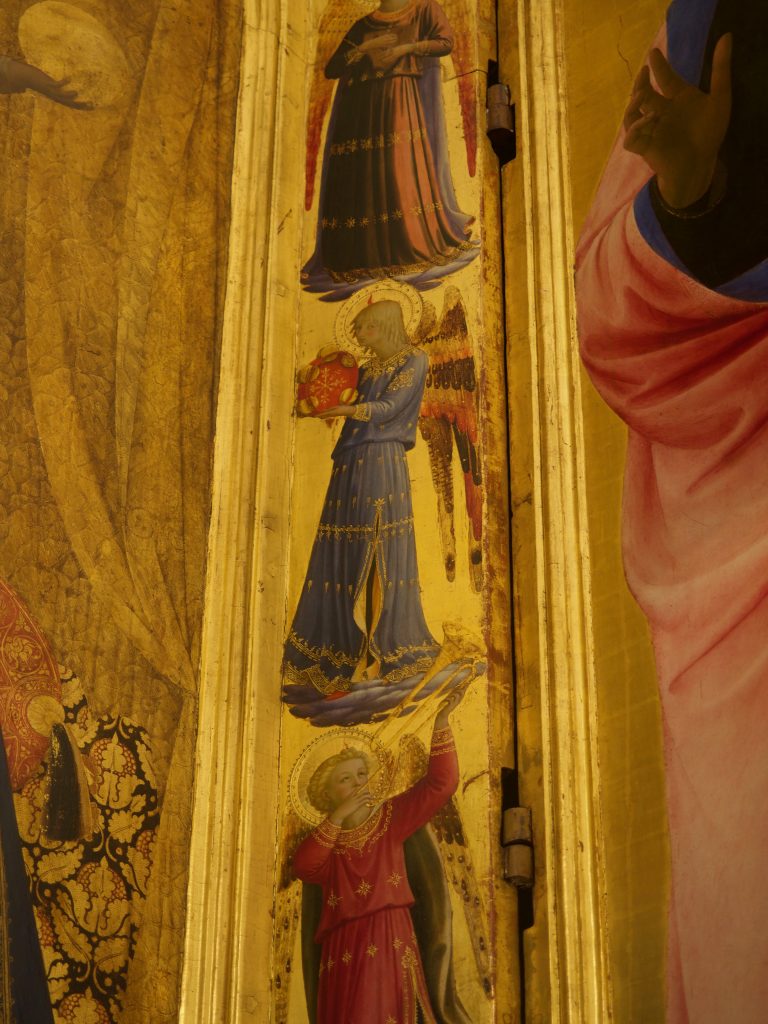
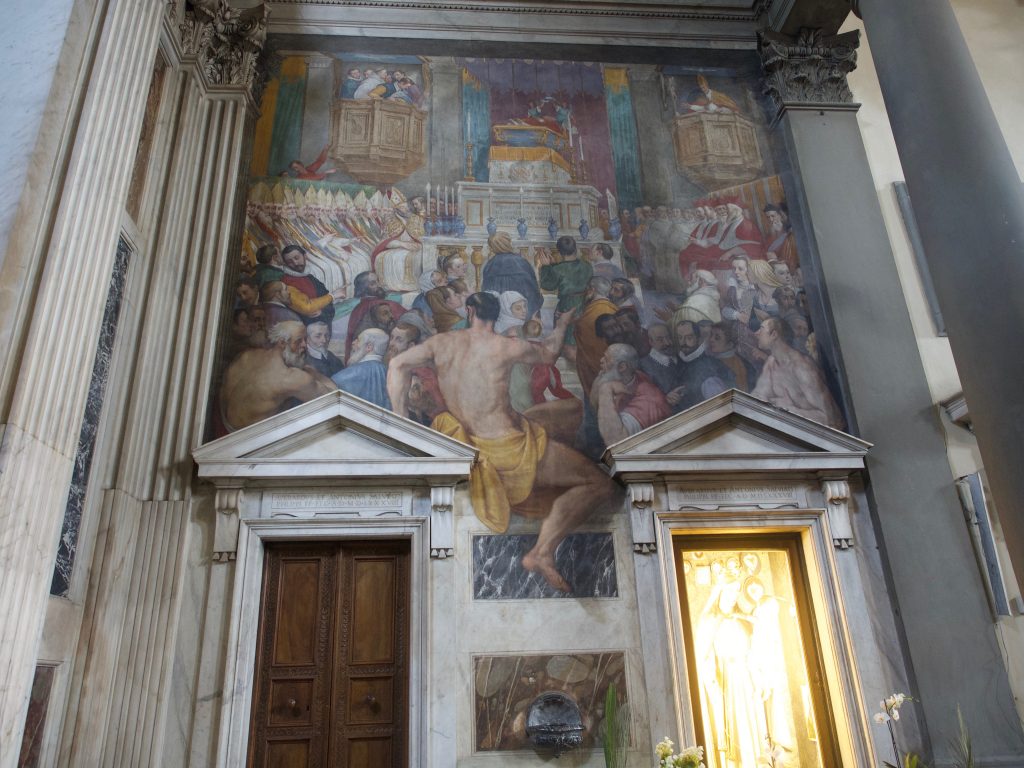


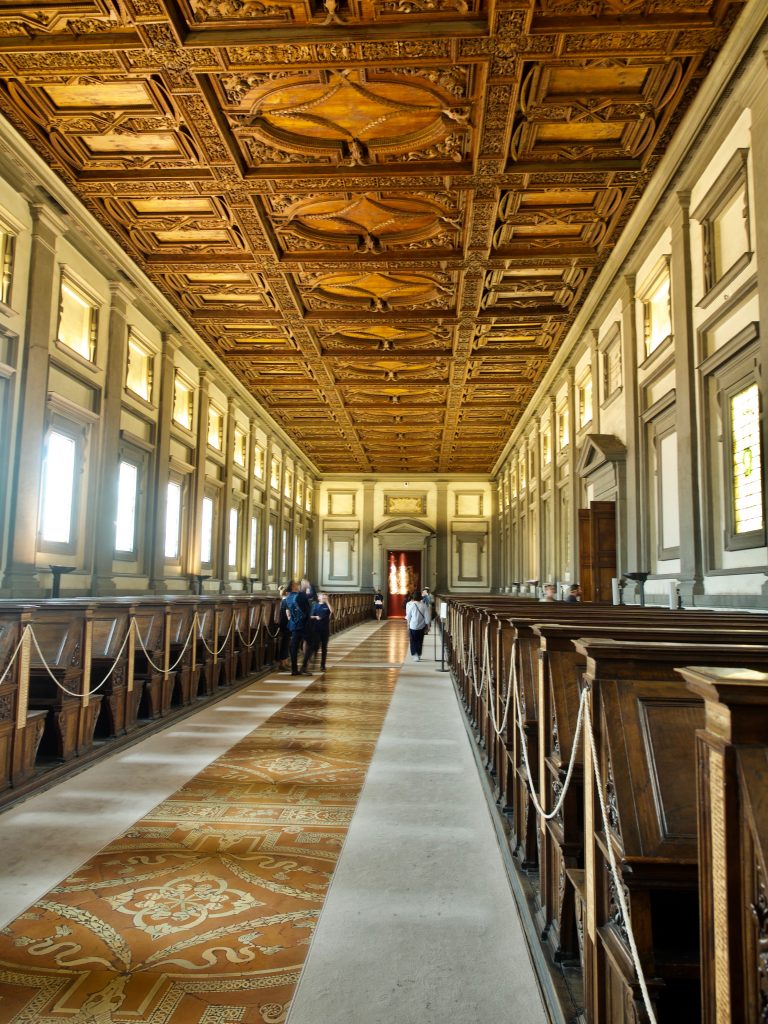

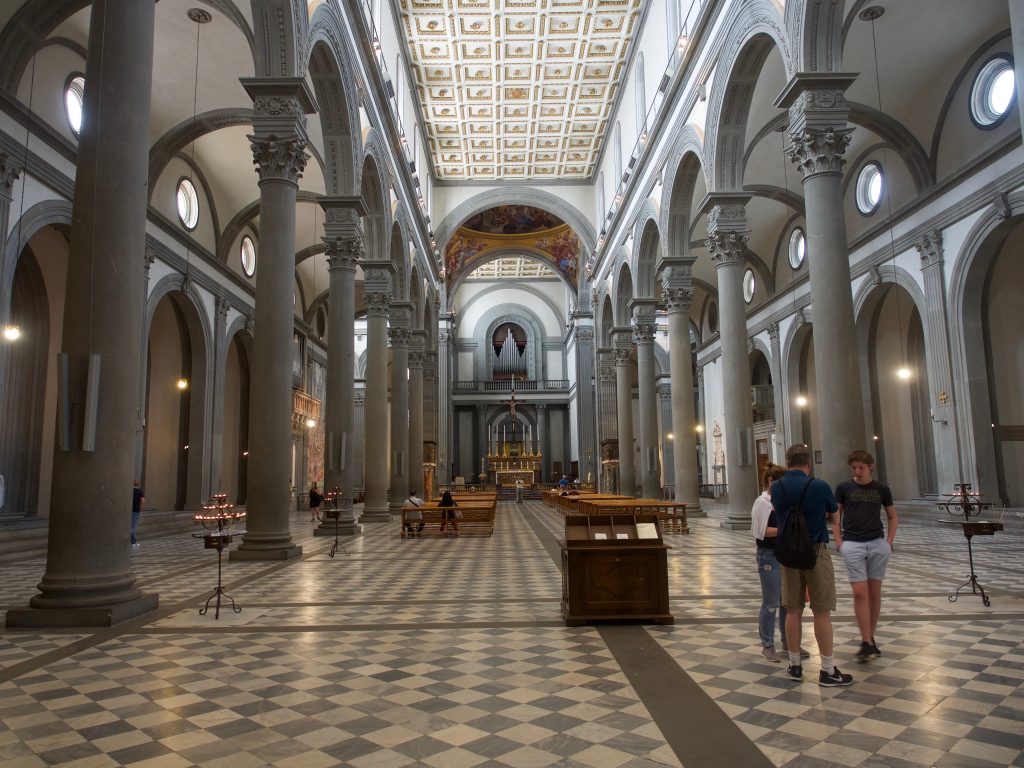
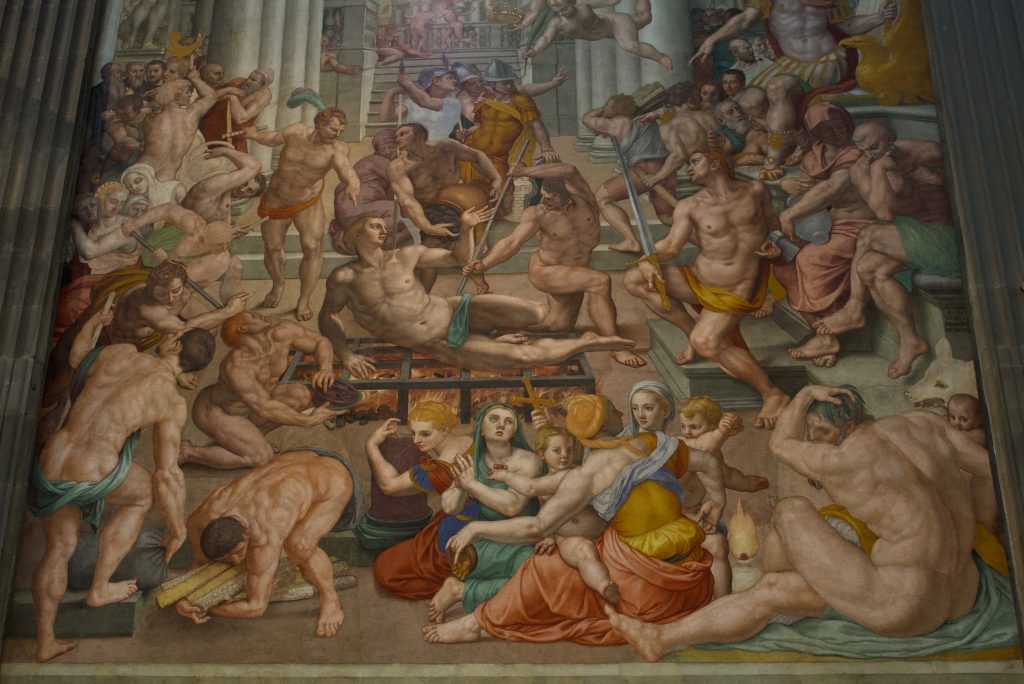
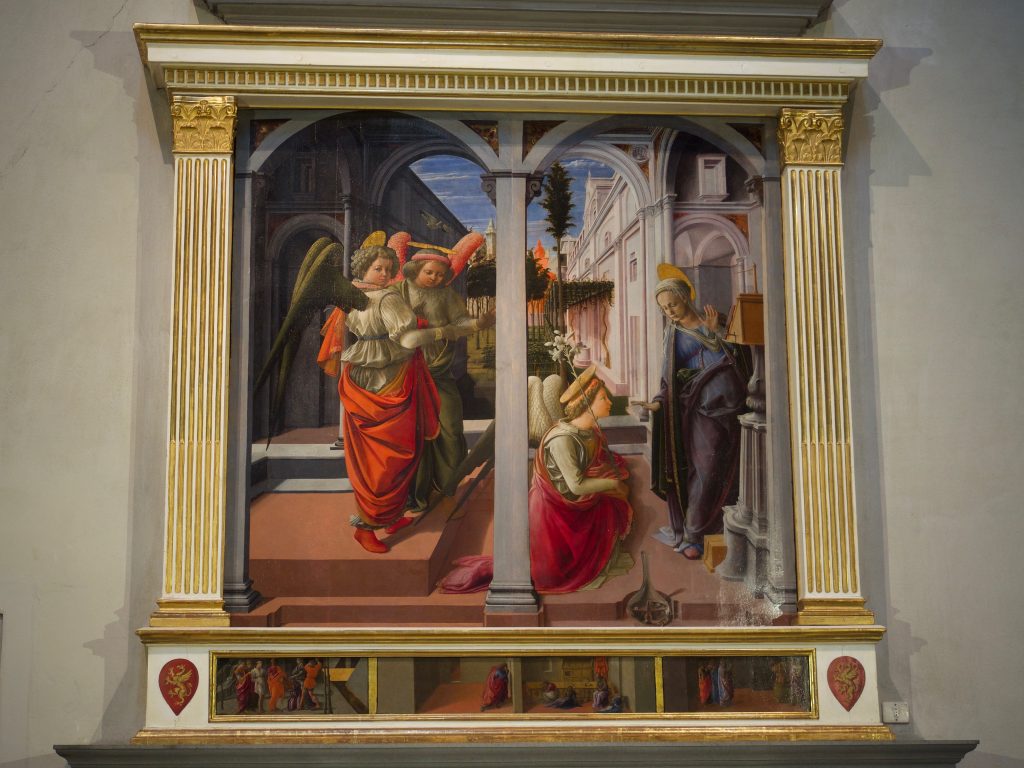

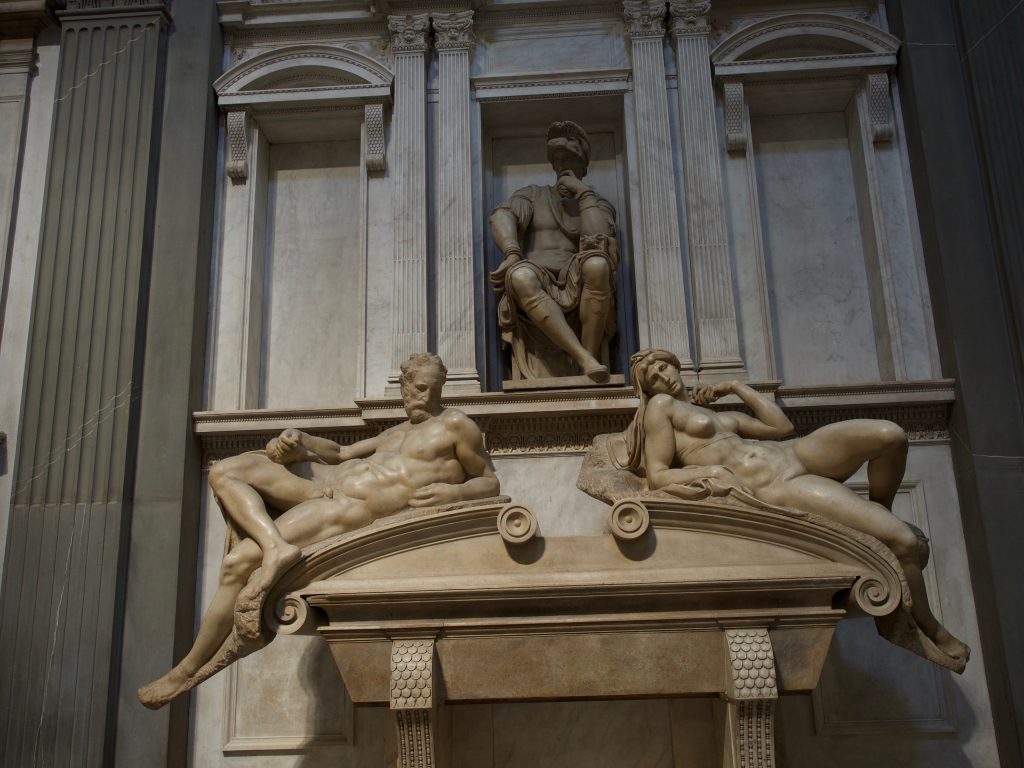

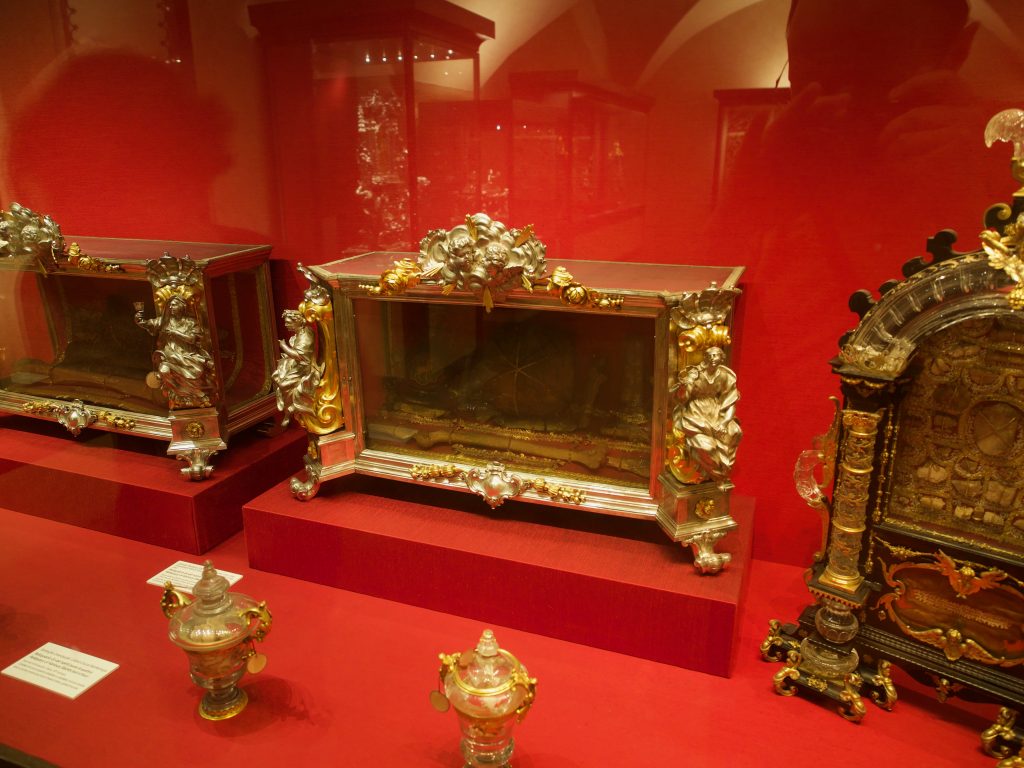

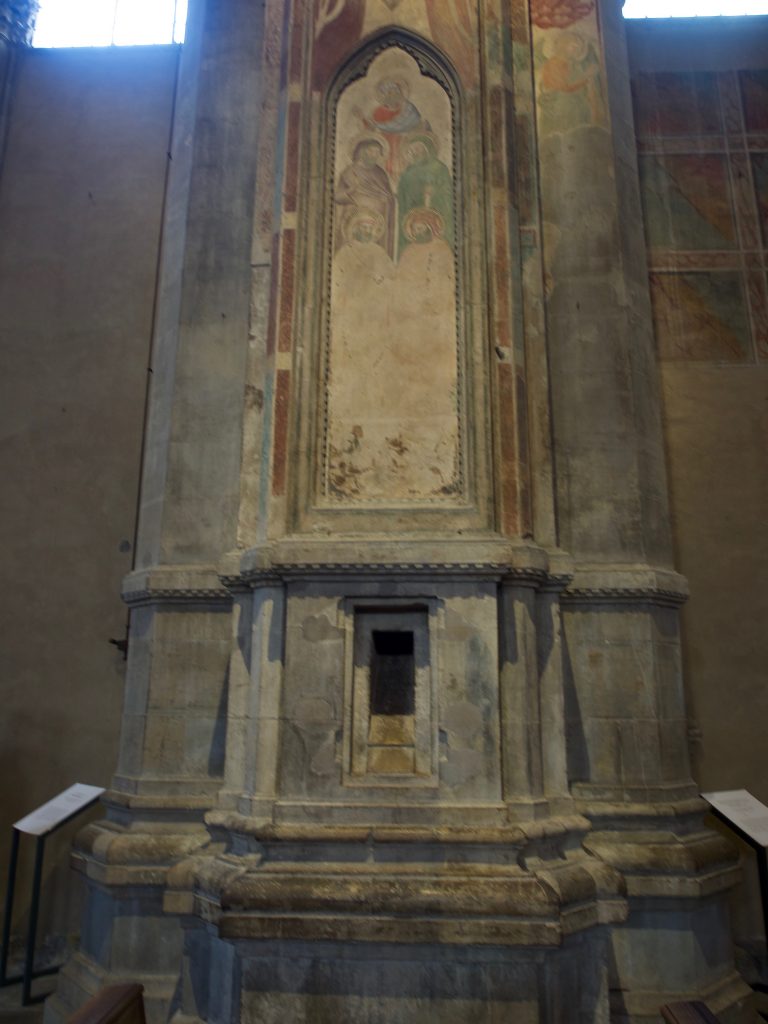
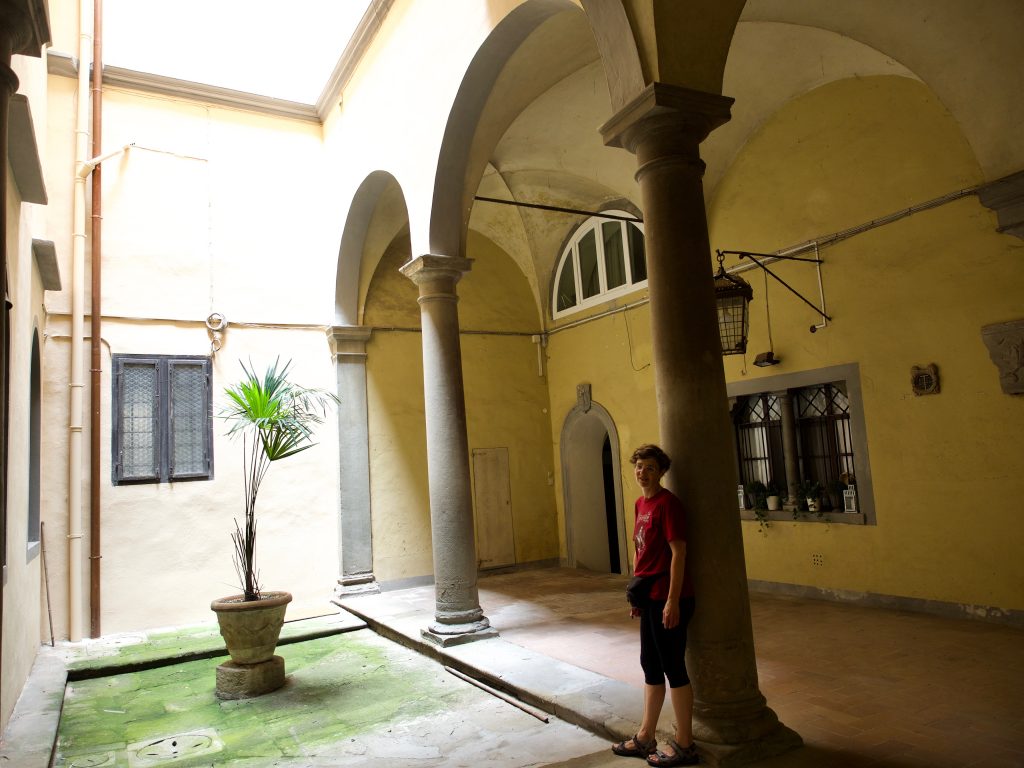
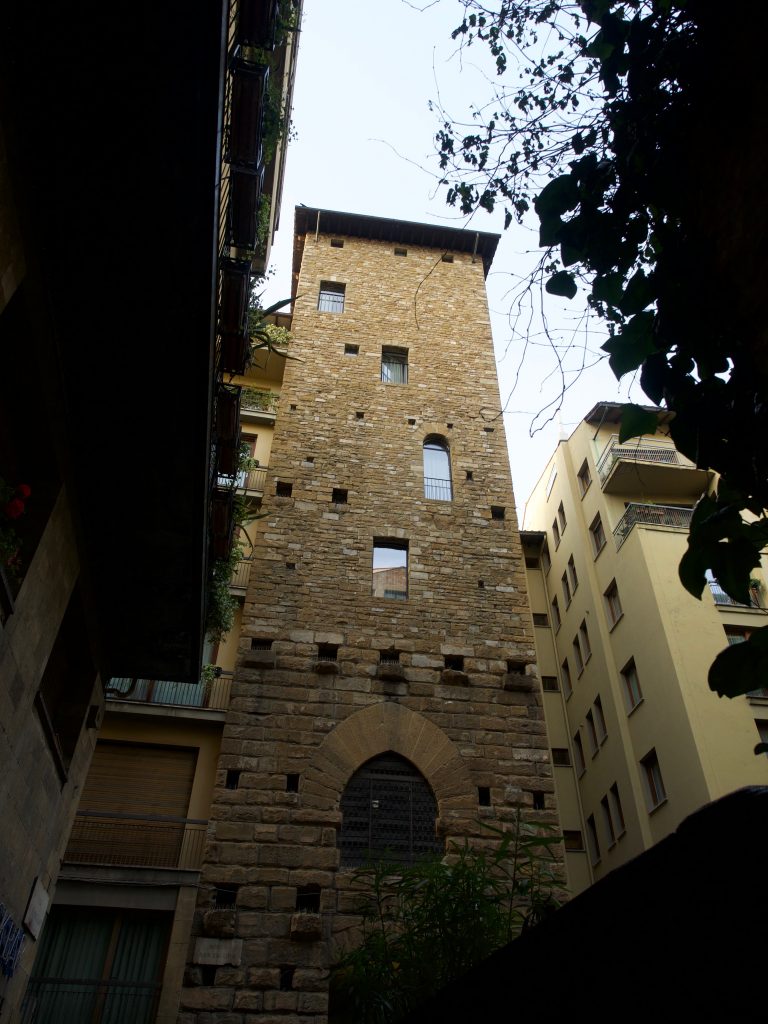
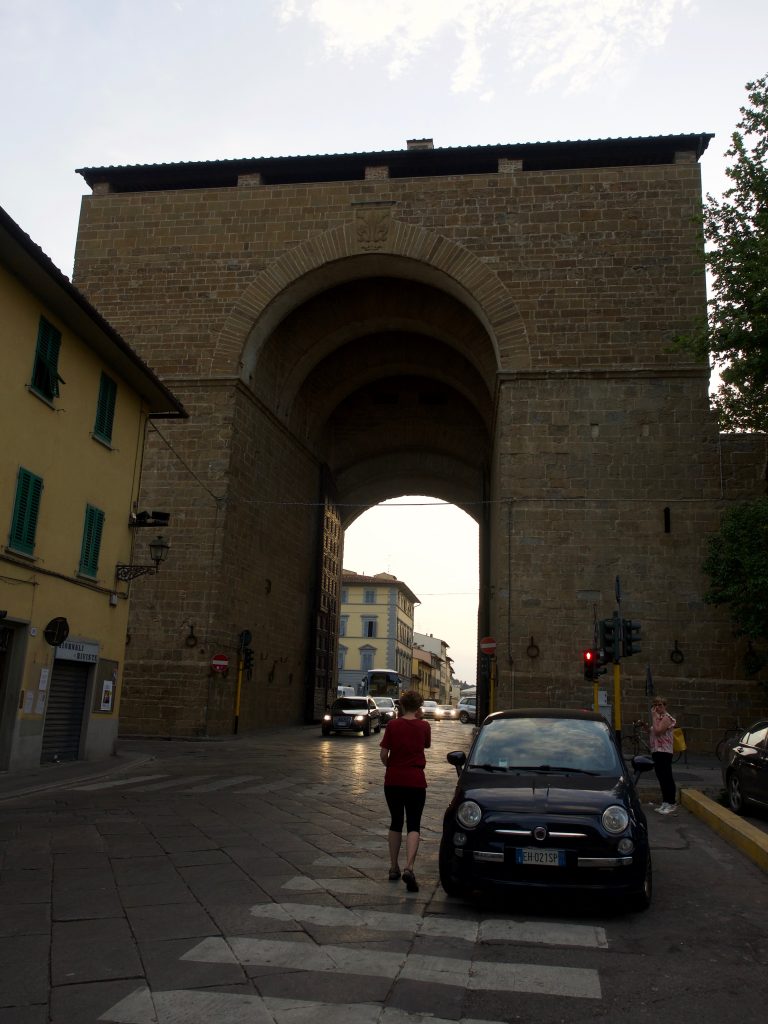
I was up too early again (sigh) but we officially got up around 7:00 and had some yogurt and tea (I made a big old mess trying to make coffee—this fancy Lavazza-Mio espresso maker is just not making friends with me) before we set out to go to the Duomo’s ticket office and get reservations for the Dome climb. The earliest we could get were on Monday, but that was great for us—we have 72-hour tickets that cover basically all of Florence’s museums (the “FirenzeCard,” a pretty slick way of funneling people through and, despite the expense of 85 euro per person, for us definitely worth it), but the dome climb is so popular they give you dates beyond that 3-day window. That’s really tough for people who can’t be in town for that long, but we have plenty of time—and we may even have to get the add-on FirenzeCard extension for another $28 a person for the stuff we just didn’t have time for.
Then we got started on today’s round of museums by looking at the baptistery, which is under restoration and was actually much smaller on the inside than I thought. The Italo-Byzantine stuff on the ceiling was pretty (Eliot thought the enormous Christ was “awful” but I don’t think in the modern sense—more like “filling me with too much awe,”) but I know so little about it—intriguing to find out, though, that we could see some even older floor mosaics through the grates in the floor. I like the shape of the baptistery and the “old-style” black and white coloration, but it’s hard to imagine, given the size of Florence now, that once upon a time every Florentine was baptized there. We went from there to the campanile and climbed its 421 stairs. That was fun, and I think that the stair climbing I was doing at home for exercise last winter and spring when the weather was too crappy to run really paid off. But Mark, who didn’t do that, also held his own! The campanile is beautiful and the view from up there is of course really impressive in all directions, including directly at the cupola, where the other tourists can look across at us from the other high place. What is it about always getting up to the highest point? Mastery? Maximum 360 view? At any rate, it was fun, especially since I am recognizing at least some of the landmarks, if not nearly as many as I should by now. I was certainly excited to see San Marco from there, north of the Duomo in the “Medici hood” of the 15th century, the San Giovanni quarter, where the family had extra much influence, built their first palazzo (now Medici-Ricardo) and San Lorenzo as well as sponsoring a bunch of convents and monasteries, including of course San Marco.
That was where we headed next, and as one of the spaces I have already studied and that I will be working on further for my masters’ thesis, I was especially excited. It is also a bit more of a specialized taste to look at Fra Angelico’s work, so while we were not alone, this was not a museum with the usual masses. It was, however, as beautiful as I expected and more so. The building was designed by Michelozzo, with two cloisters downstairs and simple monk’s cells upstairs, but also a library where the monks once illuminated manuscripts, and which has those beautiful well-proportioned arches and columns accented with pietra serena (a dark sandstone) that I love so much. And the frescoes that decorate the walls of many cells and some of the public areas—over 50 of them total—are by Fra Angelico and his workshop. I researched them and their 19th century reception pretty intensely last spring, because they a) became super popular starting in the Romantic period as people were discovering late medieval and early Renaissance sacred art as noteworthy and beautiful. This continued into the Victorian era, and Ruskin in particular went completely apeshit over Fra Angelico when he first discovered his art in the 1840s (later, he cooled down a little, but he was just raving about Fra Angelico’s angels and their wings, especially about the angels on the frame of the Tabernacle of the Linenweavers (Mark took pictures of the whole line-up of those angels for me). The hitch was that while Ruskin could see the frescoes at San Marco, women couldn’t see any but the ones in the cloister and the chapterhouse, where there is a huge crucifixion with saints and church fathers. George Eliot went and sent George Henry Lewes, her significant other, to see what she couldn’t, and then she built descriptions of paintings she couldn’t see into her novel Romola. That’s super exciting to me (I’ve already written a conference paper and a seminar paper about this) and seeing the frescoes as well as many altar pieces by Fra Angelico at San Marco was amazing. The most famous of the frescoes are the huge chapterhouse Crucifixion (which Eliot did see) and the big Annunciation in the hallway upstairs (which she didn’t) but I like the little frescoes in the cells as well (many of them are done by the workshop and repeat the same few motifs over and over for the contemplation of monks, novices, and visitors that stayed in those cells). The chapterhouse Crucifixion has been pretty recently restored and is beautiful.
Many non-fresco paintings by Fra Angelico were also gathered here from elsewhere in Florence when the monastery became a museum in the 1860s, and when women were finally able to go see the works, and those were interesting to compare to the frescoes—even though they are tempera and not oil, they are much more detailed and the simplicity of the faces in the frescoes is traded for much more facial expression. Not to mention the fact that there is so much gold. Ruskin, Eliot, and also Anna Jameson saw a number of these altarpieces etc. elsewhere, because some were in the Uffizi in the 1800s, and others still in situ in various churches. It’s nice to have them all in one place instead.
Again, I was surprised to discover some of the “extras”—in this case, some older frescoes that can be seen through the floor, in areas that must have been part of the ground floor and were covered up, and also the fact that the monk’s cells were open at the top to the rafters above. I am not sure that was always that way, but our apartment is actually set up the same way. I’d also forgotten of the beautiful Last Supper fresco with Cat by Ghirlandaio that’s there. And then, on the way out, we were suddenly in an area that was full of old carved stones from buildings that had been demolished, without any further documentation, as well as a room of fresco fragments from all over the place, which even had a decorated wood ceiling that was taken from some other building and preserved at San Marco. We also took a quick look at the church itself, which was very much baroqued-up after Fra Angelico’s time, with only one piece by him left (another Annunciation) and didn’t do much for me. But it did have an interesting fresco by ??? with an illusionistically interesting leg sticking out between two doors. Amazing stuff everywhere, and a will to preserve a lot of it that I do appreciate but that also makes Florence overwhelming. Every square inch is history.
We, however, needed at least a little break from all that history and art, and just had a simple bistro thing (sort of a cross between a pizza and a pizza romana) across from San Marco, and then walked the 200 feet or so to the former convent of Sant’Appolonia, where a quiet bunch of nuns lived for centuries with gorgeous frescoes in their refectory and didn’t really think much of it. While San Marco was at least sort-of known and visited because Vasari wrote about Fra Angelico, these were not really discovered by the world until the early 19th century, when the convent was decommissioned. But now the beautifully restored Last Supper by Andrea Castagno is a famous fresco that predates Leonardo’s by about 50 years. It was impressive to see; quite large and with an interesting investment in making the perspective work right with people seated in the space, so they looked up from below at Christ and his disciples (with Judas on the other side of the table from everyone else, just in case we miss the names underneath).
Since we were already in the “Medici neighborhood” we went across the (new/19th century) indoor/outdoor marketplace near San Lorenzo (super touristy) and into all the different parts of San Lorenzo that can be toured. The church itself, along with the old sacristy, by Brunelleschi, the library with its crazy staircase (both by Michelangelo), and the New Sacristy, also by Michelangelo (along with the horrible Baroque Chapel of the Princes), and the crypt with some relics and treasures. Like San Marco, San Lorenzo is a sacred building complex commissioned by Cosimo de Medici in the first half of the 15th century, but with much more Medici stuff and an all-star team of artists and architects involved. I have to say that my favorite part were not the two famous sacristies/side chapels (the old and the new) and not even the library, but the church itself. The design is really simple classicizing designs, all lines and very much about long rather than high, all white offset with the pietra serena I love so much, and without all that curvy decorative overload of the baroque. The way later cupola painting is actually complete overload and jars badly with that design. The other works of art are just almost stand-alone, rather than integrated into an elaborate decorative / framing structure. I don’t know why I like this so much and can’t make friends with the late Renaissance and the Baroque drive to decorate everything with gold and swirlies, but in architecture, the Renaissance is just a clear preference for me.
The highlights in San Lorenzo for paintings were the Bronzino fresco of a Martyrdom of St. Lawrence with the huge muscled Michelangelo-esque man in the corner and an Annunciation by Filippo Lippi. On the way to the New Sacristy, Mark found a fun statue of a beheaded guy with the alien from Alien sticking out the gullet, but of course the big-deal statues were the Michelangelo pieces in the New Sacristy, in particular the Night with her interesting posture and her weird boobs. In the crypt, we actually started to get a bit silly, because the treasure of San Lorenzo so many ridiculously sumptuous reliquary shrines, including two that looked for all the world like steampunk microwaves that toasted their saintly contents a bit too long.
We were pretty much done with our art viewing at this point, but for good measure, we looked into Orsanmichele to see the CRAZY tabernacle by Andrea Orcagna made for the Daddi Madonna after the Black Plague hit Florence. I also showed Mark one of the columns where you can still see the grain shoot from when the church was a granary. Then we walked home and took a well-deserved nap. We had dinner at the apartment about 6:30 (pasta and salad; I am really making this work for us), and then we headed back out for an evening walk on OUR side of the Arno. We had fun discovering tons of the old family towers from the Middle Ages, all converted into apartments of once sort or another. We also walked by several churches we know we need to return to, including S. Maria del Carmine (with the Brancacci chapel), and another couple of city gates with parts of the wall on the west end of the old town with the last wall ring that was built. We turned back by the pseudo-gate called the Rondinello right by the Arno, and then made our way back via the Pitti Palace and through winding streets past a good gelateria, while also trying to look out for parts of the old passage that connected the Palazzo Vecchio to the Palazzo Pitti in the 16th century. I have to admit that I didn‘t realize until Mark pointed it out to me that you see the traces of it above you, on the second or higher floors of various buildings and churches and also along the Ponte Vecchio. By the time we got home, it was already quite dark and we were ready to wrap up the day with showers and a last look at the day‘s photos. We are being busy tourists!